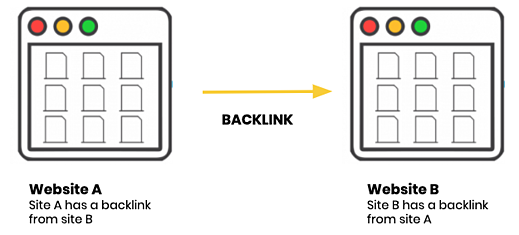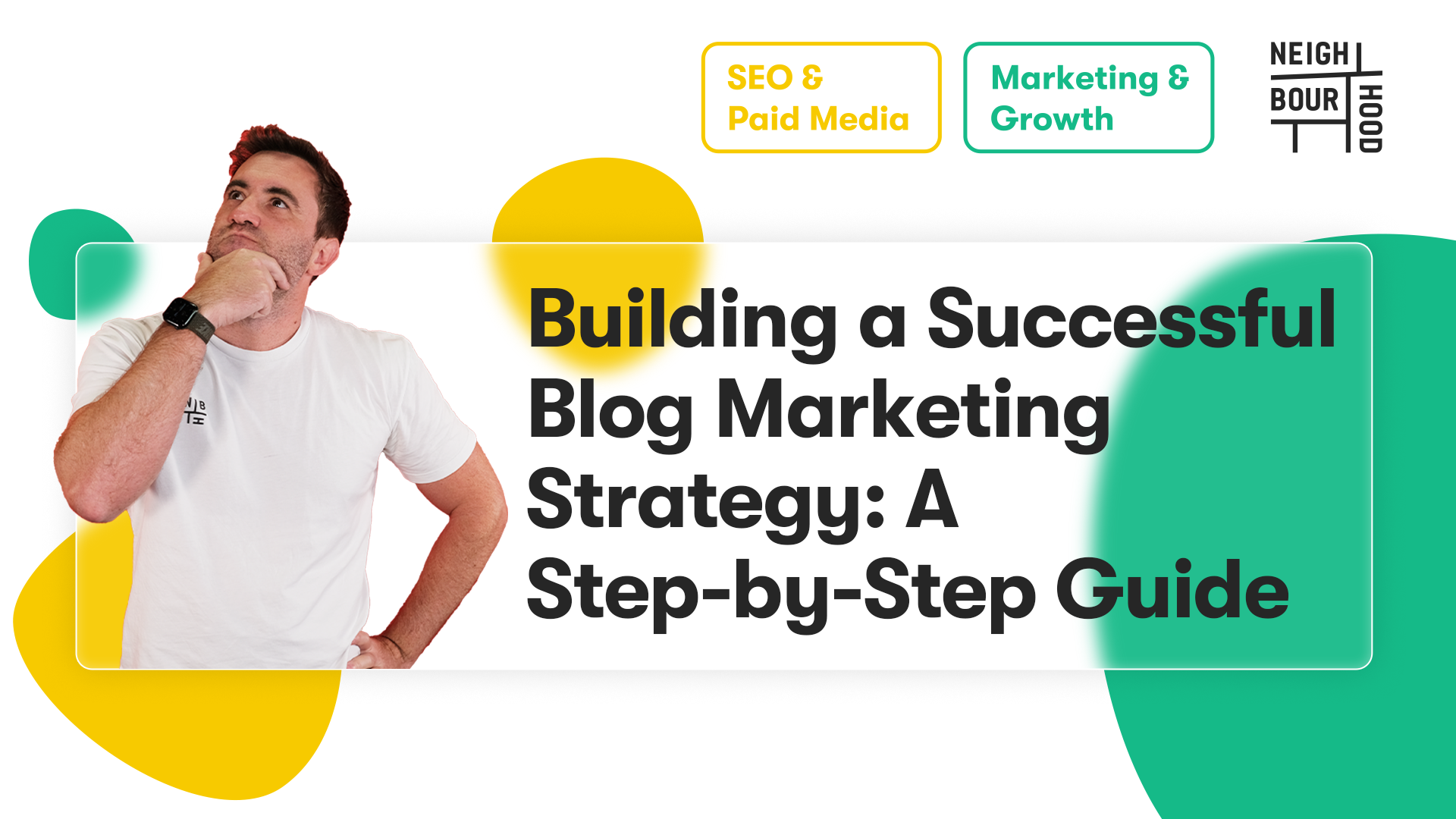The cats out of the bag - blogging is great for business. It keeps you relevant, engaging, and interesting. When done right, blogging is the all in one tool that brings in leads, helps you create a unique presence and establishes you as a thought leader. Not to mention, it doesn’t require a massive budget or a full-scale marketing department. Got your attention? Good!
While blogging sounds like your knight in shining armour (and it totally is), the web is oversaturated with content, with over 2 million posts being published every day. These days, blogging is as essential as food and water. But in the competitive space of web content, having a blog just ‘cos doesn’t cut it anymore. To make sure you stand out (and survive) in the hollow depths of the search space, it’s important that you are optimising your content and are following a clear blogging strategy.
Before we jump the gun and tell you why blogging is the crème de la crème for your SEO purposes, let’s backtrack a bit. I mean, how are you supposed to optimise content for SEO purposes if you don’t understand what Search Engine Optimisation is?

What is SEO and why is it important?
While we know SEO stands for Search Engine Optimisation, what we really want to know is what does it actually mean and why is it so damn important? When you have a pressing question you need the immediate answer to, such as “Takeaway Thai near me”, “how many hearts does an octopus have?” or “why isn’t 11 pronounced onety one?", who do you ask first? While you may ask your mates or mum and dad, there’s always one who seems to have the answers. Google.
So, just as you turn to search engines to answer your deep questions and concerns about life, you also turn to them to find answers that will help you meet your needs. Search engine optimisation then, is the essence of online content, and is the essential strategy that allows the content you create to rank competitively on online search engines. So that if you’re a Thai restaurant and someone searches “takeaway Thai near me” you’re one of the top results on the page.
In other words, in this day and age, it is absolutely essential to show up in the top ten search engine listings if you want to be seen online. To ensure that your business appears in Google’s top ten organic listings you need to optimise your content accordingly. In this competitive environment, a whopping 67% of all clicks are used within the first five results on Google. That means some serious SEO, for your business. As SEO applies to all online content, blogging is certainly no exception to the rule. Don’t let your blog content fall on deaf ears. Develop a blogging strategy to boost your overall SEO and improve your search engine rankings.
How does blogging help SEO?
Blogging boasts a number of benefits that we could talk about underwater and with a mouth full of marbles - aka A LOT. But some of the benefits may include things you might not have even thought of. For starters, it’s the perfect way to establish brand voice, recognition and loyalty, by proving your brand has its own unique personality, has tons of info, and is worth spending time with! It’s also the perfect form of content that provides you with the opportunity to target keywords so that when someone asks google a question relating to your business, you are at the top of the page, ready to answer it.
Naturally, more words on a page mean increased time on your site, as well as more page views, and as a result more precious time in front of your prospects eyes! Less obvious though, more words also mean a higher ranking in search - as the average length of the content in the top 10 results of search queries are over 2,000 words. Interesting huh?
But it’s also much, much more than that. The type of content, the length of the content and the inter-linking also helps with your SEO efforts - but we’ll get to that in a moment. Blogging is essentially a science, and it’s important you combine all the elements together, to avoid a burning off your eyebrows fiasco because you skipped a step in chemistry class.
To reap these rewards, it’s important to maintain a blogging strategy with SEO at its' core. Plain and simple (..kind of). You can’t just show up once in a blue moon with a blog either. It needs to be consistent.
What is blog optimisation?
Kind of how your trainer at the gym tells you to push harder, just when you think you can’t - blog optimisation is essentially about making your blog better. But it’s more than just great content and impressive language. Blogging strategy is all about traffic, and getting more of it.
Unless you’re blogging purely for the joy of writing, without optimisation your blog will be occupying the digital space invisible to the people it was intended for. Creating great content can be time-consuming, so don’t let your amazing content go unnoticed.
It’s time to start thinking like a search engine to get to the top of the SERPs.
How to optimise your business blog for SEO
We know how important it is to optimise content for SEO and engagement, but… how do we actually do it? SEO can feel like a bit of a minefield, when getting started. Digital content is a bloody big business. But like I said, it’s scientific (almost). Following the formula of SEO, means once you’ve got the hang of it, you're ready to go! That is until Google decides to change their algorithm again… but that’s for another day.
Follow these top tips for optimising your own blog and start to reap the rewards in no time.
1. You need better headlines and headings
If your content is underperforming you probably need better headlines and headings. These are arguably just as, if not more important, than the main body of your content. It’s a fact that we often skim not read, so use these headings to your advantage to pull the reader in by inserting keywords and speaking to your potential readers.
If you’re feeling stuck on fun, engaging, attention grabbing headlines to use, get inspired from brands in your industry! From my experience as a copy-writer, writer’s block is definitely a thing. Next time you hit that wall, instead of scraping the bottom of the barrel for ideas, have them come to you, straight to your inbox! I've signed up for newsletters, magazines and blogs from brands in my industry such as the HubSpot Newsletter, AdWeek, MarketingWeek, MarketingMag, Seth Godin's and Neil Patel’s blogs for my morning motivation.
2. Stand out with featured snippets
Featured snippets are listed before the first position on Google. You’ve probably noticed these listings before in a box, image, video, or table (or in the image below). Featured snippets gain more clicks because they appear before organic search results. Optimising content to appear in featured snippets is a sure-fire way to drive more traffic to your blog content.
-2.png?width=600&name=google-1593405462226%20(1)-2.png)
3. Curate your keywords
We mentioned that keywords are the lifeblood of SEO. Without wanting to sound like your mum nagging you to clean your room, to optimise your blogging strategy, you must, must, must do your keyword research. A blog without keywords is a blog without views. Invisible.
Focus on low difficulty keywords. That means words and phrases with a high traffic, low competition ratio. There are lots of tools out there to help you figure this out. Google AdWords and Ahrefs will help you monitor the status and difficulty level of your chosen keywords.
It’s also beneficial to hone-in on long tail keywords. These can be very specific to your product or service, making them lower in competition and easier to rank. Place these in your titles and headings to attract customers looking for your specific product or service.
Integrating keywords is a bit of an art form. Once you’ve chosen your keywords, try to integrate them naturally. There’s nothing worse than when someone takes a joke too far and kills it. Try not to do the same with your keywords. Avoid keyword stuffing and focus on one keyword per blog post.
4. Link like a pro
Internal linking allows you to direct the reader to other posts on your site it encourages readers to remain on your site and explore more of your content and services. But without good quality backlinks you won’t rank on Google.
To optimise your article, and link like a pro, you need to adhere to Outbound, Inbound and Inter-linking - the SEO trifecta. They are three linking activities to include in your blogs that'll get you results.
Here’s how to do it.
First up, there’s outbound links. Think of outbound linking like referencing, but rather than that pain-in-the-butt thing they made you do at uni (which you’d only do at the last minute), outbound linking in blogs help you rank higher! Outbound (External) Links are hyperlinks that point at (target) any domain other than the domain the link exists on (source). In terms of how they work, using descriptive keywords in anchor text that reflect the same topic or keywords the target page is trying to target, will naturally rank you higher in search engine results.

Next up, you've got inbound linking, otherwise known as back-linking. Inbound links (Backlinks) to your website are a signal to search engines that others vouch for your content. Kind of like your hype man. If many sites link to the same webpage or website, search engines can infer that content is worth linking to, and therefore also worth ranking highly! A blogging strategy to get you high quality backlinks is through blogger outreach, where you write a blog for another website with an equal or higher domain authority as yours! Not only is free, but it’s a great way to get your name out there, make connections and be seen as an industry expert.

Last of all, you've got interlinking - this is where pillar pages and topic clusters become important. At its most basic, interlinking is simply hyperlinking a related blog on your website to the keyword/s in the blog you're currently writing - just like I have above.
Clustering your content by topic, and then grouping those topics under one main pillar page which has as many links as possible to related content, is the key to a squeaky clean pillar page strategy. To ensure that other websites link to you, keep your content to a high quality. Top-notch content will please your existing readers whilst acting as a catalyst for growth.
It’s time to start thinking of links as your blogging currency and get trading!
5. Think like Google
To rank on search-engines you gotta think like a search-engine. To do this there are certain things you should know.
Google favours longer content and tends to disregard short posts. Aim to write scannable, longer posts of a minimum 1000 words. More words mean a higher ranking in search, and the more time your prospects will spend on your page too. It’s a win, win.
Secondly, make your blog responsive for mobile. In the famous words of Kath Day Knight "Don't be stupid Kim." You wouldn’t believe how many people neglect this very important SEO principle. Not only does Google employ mobile-first indexing as a standard, but the pandemic showed us that we are consumer a lot more media at home, and a lot more from our mobile devices. It's pretty straightforward - without a responsive mobile theme, your rankings will suffer.
Now it certainly isn’t a blog without images, just like a cake isn’t a cake without icing right? It doesn’t take much effort but BOY does it make it tasty and stand out (in search results). Let's help you get ahead of your competition with some top-notch image optimisation.
What is image optimisation exactly?
Alt text (alternative text), also known as "alt attributes" or “alt descriptions" are used within an HTML code to describe the appearance and function of an image on a page. Optimising your images not only creates a better user experience for your visitors, but harnessing the SEO potential of your images you’ll be first to gain the Google image search traffic that your competition is likely missing out on.
The good news is that optimising your images is fairly straightforward. All you need to do is add appropriate descriptions to all of your images. Alt texts facilitate accessibility by providing descriptions of images and help search-engines when browsers fail to render the images themselves. This is the best way to get your images on Google image and web search displays.
But what makes a good alt text?
How to optimise images
Use plain descriptive language
Google responds best to simple language. This will aid search-engine crawling and get you ranking quickly.
Use keywords
Include keywords in your file names. Again, this will help you Google crawl your content and get you ranking quickly. Many bloggers miss out on this opportunity to incorporate more keywords into their content.
Focus on file size and type
Image file size is so important. To optimise user experience, you should aim to keep your web page loading times as fast as possible. Nearly 50% of consumers won’t wait more than 3 seconds for a site to load. Keep file sizes small and loading speeds fast. JPEG images offer the best quality at the smallest file size.
Don’t let decorative images drag you down
Fancy web design is all well and good until it slows down your loading times. Don’t prioritise pretty over efficiency. Try to optimise any non-essential imagery to ensure fast loading speeds. You can do this by shrinking larger files and using CSS styling to create coloured areas instead of images. Test your images to see which ones actually lead to conversions and scrap any that don’t.
Sitemaps
By using sitemaps you’ll make your blog marketing strategy Google friendly. Web crawlers will only pick up on images if they are listed in the webpage source code. By including images in a sitemap you will facilitate this process.
We’ve now established how content and image optimisation is great for SEO and engagement.
Still with me? Good, we’re nearly at the end.
You’re now well on your way to becoming a blog optimisation extraordinaire. But there are just a few more things to consider before you add 'SEO extraordinaire' to your Linkedin profile.
(We’re in the final stretch, I promise it’s worth it.)
How to write optimised meta-data
Search engines often display the meta description in search results, which can influence click-through rates. It basically serves as advertising copy for your article.
SEO best practice, means meta descriptions should be optimised with keywords from the blog (ideally your primary keyword). Then proceed to incorporate a secondary keyword, naturally or in a way that makes sense (remember: no one likes keyword stuffing).
Try to incorporate a call-to-action (CTA) to encourage searchers to click and but you must not go over 155 characters to ensure your message doesn’t get cut off on search results.
There are many plugins that will help you optimise your blog and meta-data. HubSpot provides you with a range of SEO recommendations such as reminding you when your Meta description is over the optimal character count, will identify any images that don’t have alt text, and ensure that you don’t have too many outbound links to ensure the best customer experience possible.
What is historical optimisation and who is it for?
Out with the old, in with the new... Historical optimisation, is the form of optimising OLD blogs, and is something every blogger must be doing. You might be sitting here thinking this doesn’t apply to you, but trust me it does. Spending time focussing on old, outdated content can seem counterintuitive. But bare with me. Let’s start with a stat.
Did you know that a total 50% of enterprise content goes unused?
Swathes of online content just isn’t being seen, seems an awful lot of time wasted if you ask me. This is because whilst businesses can see the benefit of jumping on the blog bandwagon meaning the supply of blog content is growing exponentially each day but the demand just isn’t. People can only consume so much content. Instead of producing more we need to produce better content. Quality over quantity my friend.
Historical optimisation just means updating old blog content to generate more traffic and leads. Keeping old content up to date can massively increase conversions. This is a fool-proof way to get more value out of existing content.
Think of it as content recycling. Just like online shoppers need to break up with fast- fashion, bloggers need to break up with fast content. The aim of the game is to reuse not replace.
In today’s competitive online content environment, historical optimisation will help you stand out. HubSpot, for example, was able to increase the number of monthly organic search views on optimised old posts by an average of 106%.
The numbers speak for themselves. Try it for yourself. Revisit your old blogs and revamp them with your new SEO expertise. Reinvent your old content with a fresh blog marketing strategy. Keep it fresh and add keywords to boost conversions in the process.
What about my domain authority?
Knowing your domain authority is very useful when it comes to optimisation. By looking up your website on Link Explorer, you can find out your domain authority and discover which sites are linking to you. This is great for monitoring your website’s activity and engagement.
In some cases, it is also useful to research the domain authority of your competitors and other high-ranking websites. Tools like MozBar show you the domain authority of every high-ranking site for a particular key-phrase. MozBar is also a free Chrome add-on (you’re welcome).
Start optimising your business blog today
There’s no time like the present. Start optimising your business blog today for some serious success. An online presence is essential for any competitive business today and with online presence comes SEO.
Knowing the ins and outs of content optimisation will help you stand out from the crowd and rank on search-engine leader boards. Blog optimisation is all about strategy, so remember the tips we’ve shared and start applying them to your web content today and watch your business blog boom. Happy Blogging!



